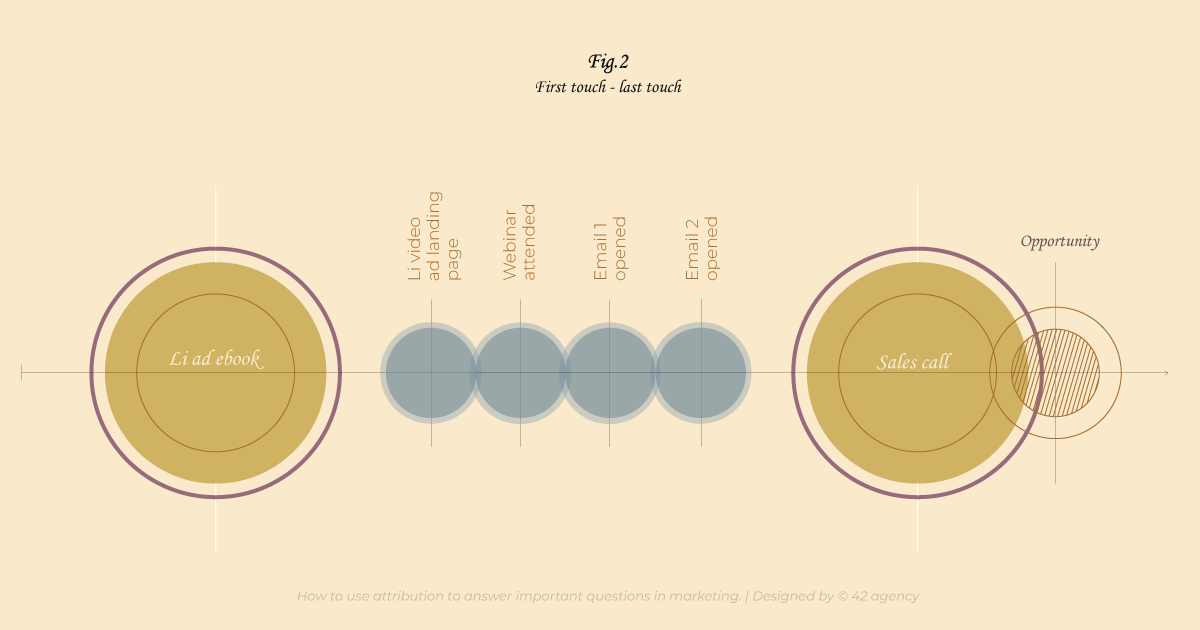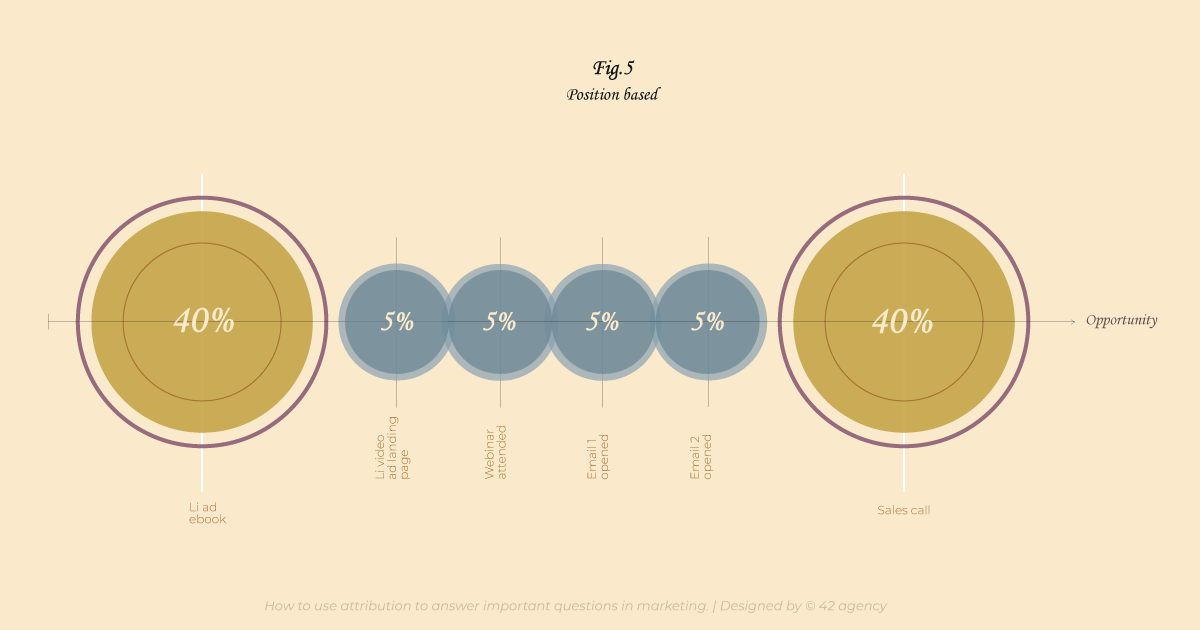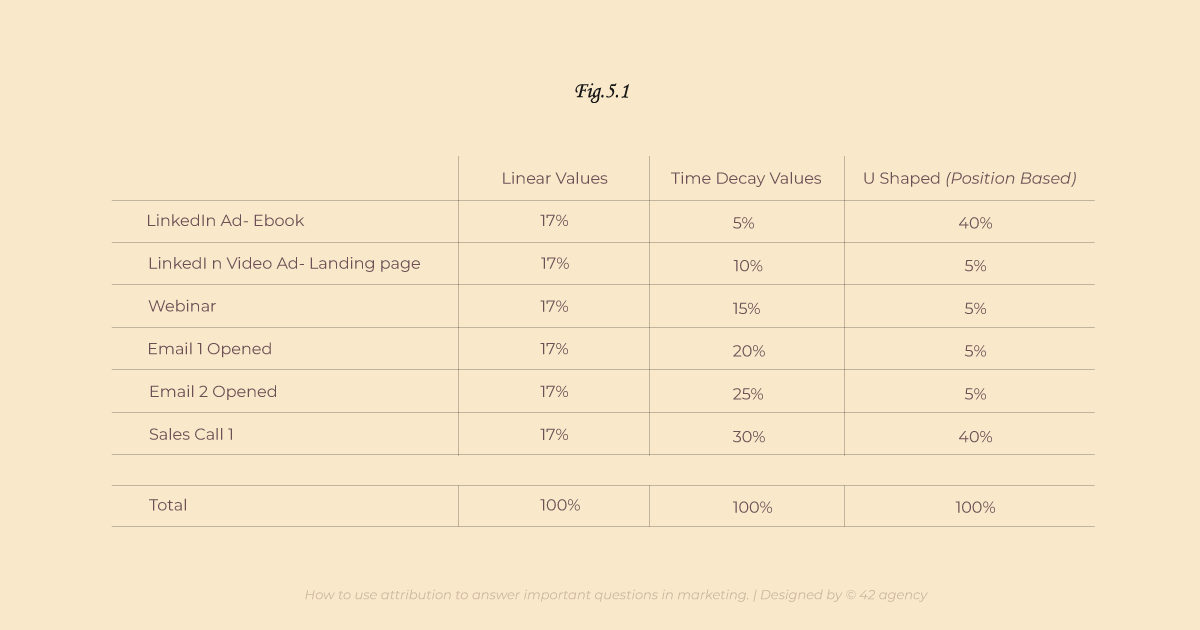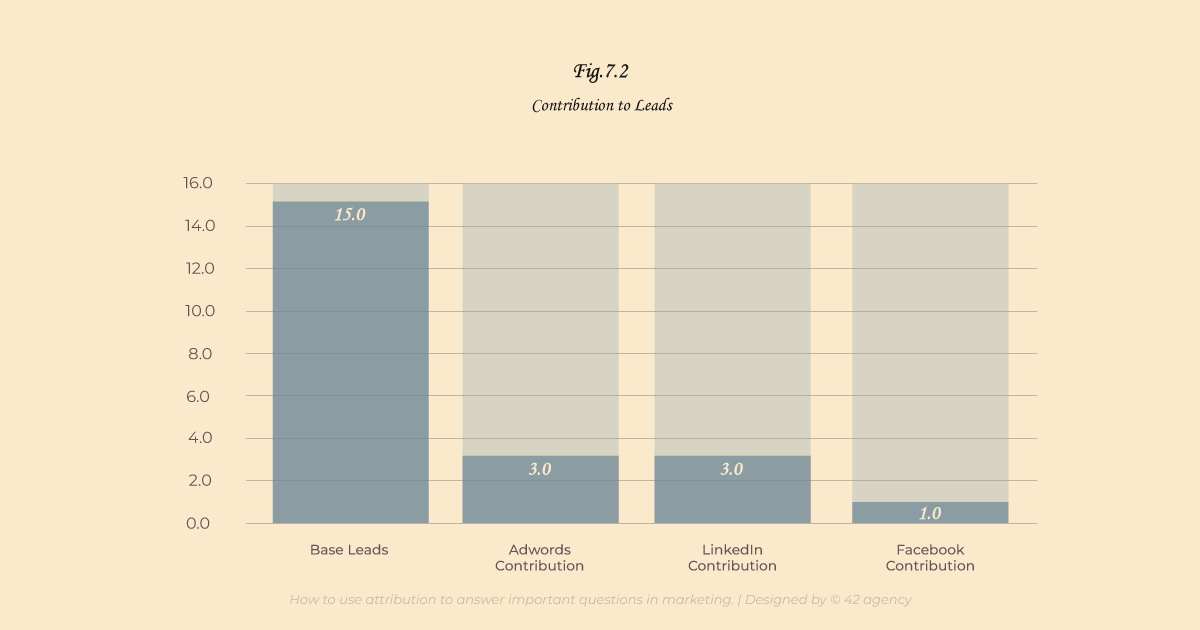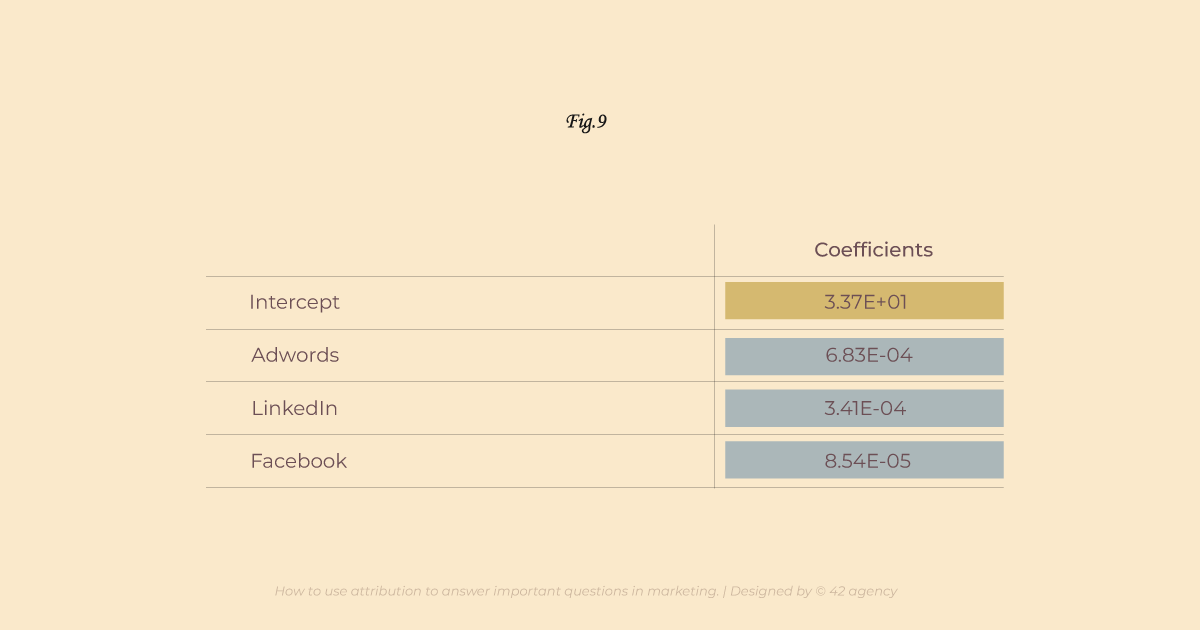Editors Note: To attribute or not to attribute, that is the question.
Ask ten folks what attribution means, and you'll likely get ten answers. We don't believe or advocate for attribution, so marketing & sales can get credit or fight over it. But instead, we seek to understand the direct & indirect ways folks learn about your brand & end up being a customer - so you can prioritize investing in whatever works.
Attribution is also often viewed as 'click-based' activity (i.e., someone clicked an ad that led them to take action). This understanding is heavily based on cookies & as cookies get scrutinized & regulated for privacy, this will become less effective. We see attribution as more than *click-based*, and we build data models that consider the holistic mix of marketing channels (online & offline). Finally, we explore how mediums interact & support each other, measure Adstock, & contribution, as well as map out the ceiling/limits.
You can even do geo testing/measure lift & get directional attribution. It's less about tying a specific action to generate revenue than understanding the comprehensive actions that lead to the right outcomes.
In other words, attribution is fundamentally not new.
FMCG brands have measured their media spend on TV and offline for decades. Before we had cookies to tie a journey, we would ask folks how they found us; then, technology got better at stitching together the data so we could understand the journey in aggregate.
Now it seems like we're back in the debate of 'attribution is useless; you can't measure XYZ' to 'we need to be hyper data-driven, and we need to measure every single click'.
The truth is always somewhere in the middle, but if we don't measure our outcomes in marketing, how will we ever improve with time?
Community Shoutouts:
Be sure to check out the following job openings by some of our friends. We love working with them; indeed, you will too.
- Float: They are looking for Account execs, Content Marketing Managers, Sales Managers, etc.
- Afresh: Several openings across most fields (Operations, engineering, sales, etc.)
- Opsera: Openings in Palo Alto and Chennai.
- Mathison: Openings in business development, finance, and marketing.
Quick favor - Before you start reading, please fill out the audience survey so we can write better essays for you (and we’d like to know who you all are) - it takes 30 secs
Attributing marketing spending and channels to actual opportunities and revenue has always been the struggle of marketers. After all, the results are an existential matter; they spell whether they’ve done their role as a B2B marketer.
Even so, attribution is an old problem. In fact, back in 1976, a British statistician named George Box wrote the famous line, “All models are wrong, some are useful.”
That usefulness concept still holds true. What has changed, and not for the better, is the perception that attribution models are true given they are data-based.
But they aren’t.
Let’s start from the beginning…
The Harsh Truth: You Can't Trust Data
Before the internet, marketing was a matter of trial and error (and luck). No one knew for certain what would work for a marketing campaign, and you still had these dopey creative types joining C-level execs pitching their exotic ideas, hoping they would help the brand differentiate and grow.
Some of it worked. "Just do it," inspired by Gary Gilmore's execution and the highly successful Air Strip campaign by Braniff, highly regarded back then, were massive hits for the brands.
Today, probably neither of them would ever see the light of day. The first would be too morbid for superficially woke western societies. And the second would never fly, given the hyper-sexualization of flight attendants.
Back then, marketing was different. You had to spend a lot of money trying out things and trust a team of researchers (qualitative and quantitative) and creatives to create the perfect ads to get in front of the right people at the right time.
Today, anyone with a computer can do the same from scratch, knowing nothing, by watching a couple of youtube videos and having access to a credit card.
The thing is, no one knows how these massive platforms work. We (marketers) run playbooks and specific tactical steps because they have previously worked. But no one can tell you exactly how AdWords or FB ads work with 100% accuracy.
That is their game. And our disadvantage as marketers.
We (marketers) are uncomfortable with the idea of ambiguity, and we try everything to remove chance from the equation. Our ads either work or don't; it is a black or white scenario, no in-betweens.
We have reached a point where ambiguity is now lost; as Thomas Bauer argues, complexity, plurality, and diversity are no longer valuable.
With behavioral economics and massive datasets combined, we have never been closer to cracking the motivations and reasoning behind purchases. Yet, it seems like Daniel Kahneman and Dan Ariely are nowhere in the average marketer's mind.
We also happen to use data to build stories around our actions, to use data to prove our vision and to tell investors or clients their money is well spent.
We often do not want to face the fact that we can argue several perspectives with the same datasets.
Sometimes, data is unbiased, and we use it to understand and improve our campaigns. And on other occasions, we use data to prove to a client that something is not executed correctly with their current vendor to bring them to our client pool.
Our perspective and interpretation matter. Whether biased or unbiased, we interpret the data in our favor.
We trust data above all else; we think it is true and parallelly ignore that our interpretations influence what the numbers say.
But the reality is that there isn’t a single truth, even with the right data.
Knowing that, here's how you can start using attribution models, while at the same time knowing their limits
Why Are You Measuring Attribution
The most important thing to get attribution “right” is to understand why you are doing it in the first place.
Generally, attribution projects start with a core question you want to be answered. This decides how you gather and measure your marketing data.
Common questions are:
Where did our customers last quarter come from?
Which of the channels last quarter contributed to opportunities?
Which channel should we spend less on?
And so, to understand attribution we will discuss some of the most common models used by marketers today.
Types of Attribution Models
Fig. 2 - Linear First touch and last touch attribution
Most of the time, you can just look at the original source and last source columns in your CRM data to find out which channel or campaign the contact or account first interacted with, and which channel or campaign they interacted with before they became an opportunity.
This is usually enough when you’re starting out, but also presents some issues you’ve already encountered.
Contact level data vs account level data – Opportunities aren’t created with just one contact, but with multiple people in a buying team. Can you really say that marketing brought those contacts in?
Not every interaction can be tracked with cookies – Whether it’s trade shows, “dark social” or a simple offline conversation, there are plenty of ways customers are discovering and learning about your product that are probably not going to be in your “source of truth”/CRM.
User error and bias – CRM inputs are occasionally done manually. It can’t be avoided that someone is more likely to assign a source for a contact that is directly related to the one that they’re working on (especially if it’s a 1:1 interaction… or you love the campaign).
Self-reported attribution – related to #3, if you were to ask your customer where they first found out about you, they wouldn't always give you an accurate answer. It’s not intentional most of the time – it’s just how memory works.
Multi-touch attribution
Multi-touch attribution (MTA) is the better choice for B2B marketers. You can map out all the touchpoints that led to an opportunity being created for that account (you must keep in mind all the relevant contacts too). Commonly used methods are Linear, Time Decay, and the Position Based Model.
Fig. 3 - The Linear Model assigns equal weight to each touchpoint
Fig. 4 -The Time Decay model assigns more weight to the more recent touch points
Fig. 5 - The Position Based model assigns more weight to the first and last touch points.
Fig. 5.1 - Model Comparison
You can also use these percentage weights to get an estimated value to the contribution based on the deal size of this opportunity or contract.
Fig. 6 - Percentage Weights
This is helpful if you want to look at contributions for particular channels or campaigns across your entire customer base or pipeline (e.g. Ads to download the ebook contributed $50,000 this quarter out of a total pipeline size of $200,000)
MTA is preferable for B2B marketing because
It’s holistic
It’s dependent on how marketing plays into your business
Which model works for you is entirely dependent on the customer journey patterns at your company and you can adjust based on that.
For example, if you use one of these basic models, and it’s saying that your webinar isn’t to be given much weight, even if you know it’s really been the game-changer for your demand gen. (And the attendees do end up becoming customers!)
In this case, then you consider first, how many customers have this campaign as part of their customer journey, and at which stage? If a fair amount of them (>50%) are viewing a certain piece of content in the middle of the journey, then it means you’d have to adjust the weights. It’s either you’d want to add more percentage weight to the mid-funnel, or more percentage weight to webinars.
(If you’re statistically inclined and have a lot of data, you can look into logistic regression analysis if you want to start modeling which marketing events can tell you the likelihood of someone becoming a customer or converting).
Of course, attribution models can’t solve inherent gaps in data, such as human error and bias, and assigning weights to different actions is more an “experiment” than “truth”, but it can describe the state of reality to some degree.
An Alternative to Attribution Models
Attribution models answer immediate questions but fall short in terms of helping you with other types of decision-making.
For example, you already know every customer has interacted with a Facebook campaign in their journey, but does that mean you can spend as much of your budget as you can on it?
On the flip side, what if you have campaigns that are great for other aspects of marketing, but don’t seem to play a major part in helping a customer move down the funnel. Can you justify spending on them? And are you better off running these than not?
If you have a lot of spend and impression data for your performance marketing campaigns, you can try Marketing Mix Modeling (MMM) to help you answer whether these campaigns and channels contribute to opportunities (to a statistically significant degree), even if they aren’t all direct response campaigns. Then you can figure out where to reallocate spend, if needed.
Fig. 7.1, 7.2 - Marketing Spend and Contribution to Leads
Start with your question
As always, to start organizing your data, you need the question you want to be answered. This is something like, “I want to know if my marketing spend on these particular channels over the last 6 months is contributing to the pipeline and if so, how much?”
Gather your data
You can also segment the spend by individual campaigns within those channels if you have enough data. At bare minimum, the data you want are spend (or impressions) and your KPI you want to measure against.
You should also have decided whether you want to just measure based on events, new contacts, or an actual opportunity (per account), so you can avoid double counting.
Fig. 8 - Channels.
Run the analysis (on a statistical program)
The results of a marketing mix model show you whether a channel or campaign does contribute to your KPI (compared to just not spending on it at all). And if it does contribute to your KPIs, to what degree?
Marketing Mix Models are statistical analyses, so the results would look something like this, where the coefficient is the measure of the contribution. The way to read them is, for each dollar (or 100 or 1000 dollars) I spend, how many leads would I get?”
In simple terms, the larger the number of the coefficient, the higher its contribution to your KPI you’re comparing it to (in this case, opportunities in the pipeline). And measures of statistical significance (like P-value) tell you whether this variable does or doesn’t have significance at all.
Fig. 9 - Coefficients.
You get the contribution number (like below) if you multiply spending on channels with the coefficient you got in the statistical model.
In the example below, Facebook has 0 incremental contribution to leads, despite having the same spend as Linkedin.
Fig. 10 - Marketing spend reimagined.
The cool thing about marketing mix models is that they also consider the carryover effect of your ad campaign, based on patterns within your own data. You can basically understand if Ads in a certain channel or campaign tend to have better recall than others (you can get better spending efficiency knowing this).
Fig. 11.1, 11.2, 11.3, - Decay per channel
And you can also use them to find out at which point in spending the contribution starts to flatten out.
Fig. 12 - Spend vs. Lead Contribution
Lastly, the MMM answers the important questions on how to properly allocate marketing spending for your business goals without needing cookies-based attribution.
Final thoughts
Attribution is a tricky subject that requires more thoughtfulness than your average marketing activity.
Models are nothing more than models. You can have infinite models to share your truth, but in the end, beyond attribution, your job is to make sure your product is successful (not to prove how your role or your department is doing well).
In essence, all data is subjective. Therefore, we must aim to explain the chaos to the best of our abilities, but even if we do, we must be aware we can never access the whole “true” picture.
What did you think of this piece?
😍 Loved it
👍 Just ok
👎 Not very good







